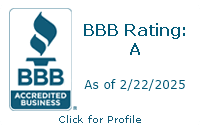Starting a residential investment property project, like building a house, a multifamily unit, or a fix-and-flip, is exciting. But getting the right cash can be challenging. When people who want to buy a home “apply for construction loan,” they often forget important details that could lead to delays, extra costs, or even being turned down.
If you want a project, avoid these 5 mistakes. This blog post also contains valuable tips to help the process go faster. We’ll discuss everything, from how to carefully make your building plans to how to tell the difference between types of loans.
People who work for ResidentialLender.Net know a lot about “table lenders” and “correspondent lenders.” We’ve been “underwriters” for 30 years and have worked with more than 200 private loans and clients. You won’t have to go through this; we can help you quickly meet your investment goals.
Mistake #1: Not Having a Detailed Construction Plan and Realistic Budget When You Apply for Construction Loan
One of the biggest mistakes people who want to become real estate investors make when they ask for construction loans is giving unrealistic project costs and construction plans that aren’t clear or complete. Most of the time, a traditional mortgage is backed by a real, finished object. On the other hand, the terms of a construction loan depend on how quickly and well you finish your building job. Because of this significant difference, lenders need more specifics to determine the risk and ensure the job can be done.
Suppose you don’t have a thorough plan. In that case, lenders won’t be able to tell how risky or profit-making your home building or investment property is. They need a clear strategy that shows every step of the building process, from starting the project to putting the finishing touches on it. Professional architectural drawings and blueprints are part of this. They are the base of your project and visually and technically show what you want to make. Along with these, it’s also essential to have accurate cost figures that include all possible prices.
Your loan will be significantly affected if you don’t have a clear budget. Costs can rise faster than planned, which means more money is needed. Sometimes it’s hard to get and interest rates are higher. It can even stop the job from being finished, leaving you with a lot of debt and something that wasn’t finished. This will directly affect the loan amount you get and, more importantly, your ability to repay the loan every month once the job starts.
We know exactly what banks and private lenders look for in building plans because we work as “underwriters” for ResidentialLender.Net. We can help you improve your project budget and ensure it’s in line and doable. For example, a contingency fund is a good way to plan for costs that weren’t intended. We can also help you get all the necessary paperwork, like getting bids from several contractors and the proper permits.
Do not make this expensive mistake. Instead, get professional blueprints and precise specs for your project. A few good companies can bid on the job, so get them all to ensure you get the best price. Consider all the costs that might come up, like buying land (if needed), materials, labor, permits, utility hookups, and most importantly, a fund if something goes wrong. Usually, 10 to 15 percent of the project’s total cost is put into this fund to cover any expenses during the building process.
III. Mistake #2: Neglecting Your Financial Preparedness When You Apply for a Construction Loan
People who want a construction loan usually only consider the land and the project details. They don’t think about their finances. This is a massive mistake because being able to pay back loans is a big part of getting loans for building projects. Lenders often think loans for building homes are riskier than mortgages on already-owned houses. There is more risk because the collateral and the land aren’t finished yet, and risks come with creating something.
Lenders look at both your plan to repay the loan and how likely the project is to succeed. You must have a good credit history and a stable income to get good terms, like low interest rates and easy payment plans. The debt-to-income ratio (DTI) is a key way for lenders to determine if you can handle more debt. This number shows how much of your monthly gross income goes toward paying off your debts. You should also show that you have enough saved for a down payment. These will show that you’re committed to the job and protect you from costs coming out of the blue.
Bad things can happen if you don’t take care of your money. If you have bad credit or a lot of debt compared to your income, you might have to pay a lot more for loans, and the terms might be stricter. Your application might even be turned down totally. Lenders also want to know that you have enough saved to pay only the interest on the loan while it’s being built and cover any costs over budget. You might run out of money in the middle of the project if you don’t get these funds. This could cause delays or even the end of the project.
ResidentialLender.Net’s financial advice services can help you look at your money and make it better. We know you need more than a clear building plan when you want a construction loan. You should also take a close look at your money. We can help you improve your credit score, smartly deal with your debts, and show lenders you have enough cash. We can spot and deal with possible financial red flags before they happen because we know what “underwriters” are looking for.
To avoid this mistake, looking at your credit score and full credit record before applying is very important. Throw out your number if you think it’s wrong, and try to get a better one. Get rid of some of your debt to raise your debt-to-income ratio. For construction loans, the down payment is usually between 20 and 30 percent of the total cost of the job.
This is much more money than you would need for a regular mortgage. Stay prepared with some extra cash in case the costs go over budget.
Most importantly, keep some cash on hand to cover the daily interest-only payments while the building is going on until the entire loan amount is paid off. To speed up the process, ensure you have all the financial documents you need, such as recent tax returns, bank records, and proof of income.
Mistake #3: Confusing Different Types of Construction Loans When You Apply for a Construction Loan
People applying for construction loans often do not understand that there are different types, each with its own structure, requirements, and effects. Many people think that construction-only and construction-to-permanent loans are the same thing or just different types of mortgages. In the long run, this basic mistake could cause much trouble.
When you apply for a building loan, picking the wrong loan can make things more complicated than needed, cost you more in closing costs, and ultimately make your project less profitable. For an easy and successful financing experience, it is essential to understand how these specialized loans work, from the loan terms to how the money is disbursed.
It’s time to look at the main differences:
- Construction-Only Loan: This kind of loan is only meant to cover building costs and is only suitable for a short time, usually 6 to 12 months. This loan is due and must be paid back when the building is finished. You need a separate fixed mortgage to pay for the finished house. There are two sets of closing costs: one for the construction loan and one for the permanent loan. This is the major problem. During the building phase, it is common to make interest-only payments, meaning that you only pay the interest built up on the borrowed money.
- Construction-to-Permanent Loan: Often, this is the easiest choice because it combines the short-term loan for building with the long-term, permanent mortgage into a single loan. Because you only have to go through the closing process once, this system saves you a lot of money on closing costs. During the building phase, the loan usually works as a construction loan, with funds disbursed according to a draw schedule. Once construction is finished and a certificate of occupancy is given, the loan automatically changes to a traditional mortgage with payments for the principal and interest.
Besides these common types, knowing about other better loans for specific investment strategies is essential. Bridge loans, for example, can provide quick, short-term financing to help people get from selling their current home to buying a new one, or they can be used for specific project steps. Hard money loans are often based on assets, offer quick cash, and are used for fix-and-flip jobs that need to be done quickly. The interest rates on these loans are higher, though. DSCR loans, which focus on the property’s cash flow rather than the borrower’s income, are becoming more popular for investment homes that bring in money.
We offer a range of loans to meet the needs of different borrowers and project types. These include USDA B&I loans, SBA loans, FHA commercial property investment loans, term loans, no-doc loans, lite-doc loans, and state income loans.
The best thing about ResidentialLender.Net is that we can help you weigh the pros and cons of each loan type. Because we know a lot about “underwriting,” we can help you choose the best option for your home investment project. No matter what kind of loan you need—a quick hard money loan for a fix-and-flip or a full construction-to-permanent loan for a custom build—we have something that will fit your needs.
Mistake #4: Neglecting Expert Guidance When You Apply for a Construction Loan
When people apply for a construction loan, one big mistake they often make is trying to handle the complicated application process independently or relying on lenders who don’t know much about residential investment home building financing. This is like making a house without an architect—it’s possible, but many risks and mistakes could cost a lot of money.
What does this affect? Permanent debts and construction loans are not the same thing. Usually, they are short-term, based on assets, and involve giving money out in stages based on how far along the building is. These specifics about how construction loans work are known only to a mortgage loan officer or underwriter with a lot of experience. They can think of problems that might come up, find missing paperwork, and show your project to the lending institution in the best way possible. Their knowledge is invaluable for getting through the strict due diligence process that these loans require.
If you don’t have professional help, you could miss necessary paperwork, get the loan terms wrong, or not show off the best parts of your project well. This could cause a lot of time to pass before the loan is approved, extra fees, or even rejection. The “underwriter” review is one of the most critical steps in the construction loan process. This is where the lender’s financial analysts review your application, including your specific construction plan and ability to pay. A guide with little or no experience might not know how best to prepare your application for this level of review.
One significant benefit in this area is ResidentialLender.Net. As an “underwriter” with 30 years of experience and a team of experienced mortgage loan officers, we offer the best financial advice for people who want to apply for a construction loan. Because we have an extensive network of private lenders and investors, we know exactly what they want to see in a good application. This lets us speed up the whole process for you.
Because we can act as both a “table lender” and a “correspondent lender,” we have the freedom and tools to provide custom solutions perfect for your home investment property project. We work with you to make sure your project is set up for success, not just processing applications.
To avoid making this expensive mistake, go out of your way to find lenders and mortgage loan officers who specialize in construction loans for rental homes. Check to see if they have a history of success in real estate funding. Once you’ve been hired, be honest and give all the paperwork that is asked for quickly and correctly. Ask lots of questions and ensure you fully understand the loan you’ll be getting, such as the draw plan, the interest-only payments during construction, and the overall loan terms. Use what they know to prepare for the strict “underwriter” review and ensure your application is as strong and complete as possible.
Mistake #5: Mismanaging the Construction Process and Loan Disbursements After You Apply for a Construction Loan
Getting the building loan is a big step forward, but it’s important to remember that it’s only the beginning. Borrowers often make the mistake of not managing the construction process well, leading to delays, price overruns, and inadequate management of the draw schedule. This lousy management can significantly affect your loan and put the success of your project at risk, even if you could get a building loan.
Why does this matter? Construction loans are naturally short-term and time-sensitive forms of credit. The money isn’t given out all at once; it’s given out in stages, or “draws,” as different parts of the work are finished. Before funds are released for each draw, the lender usually does an independent check to make sure the stated progress is correct. Delays in the project schedule, whether caused by problems with the contractor, a lack of materials, or issues that were not planned for, directly affect your project budget and your ability to make monthly payments. Every delay can push back the date of completion, which could make the interest-only term longer and the total costs go up.
Not taking care of your loan properly can have terrible results. If reviews go badly, the project costs go way over budget, or there are long delays, the lender may stop funding. This stoppage of loan payments can cause projects to get stuck, leaving you with an unfinished home and rising costs. It can also get you into legal trouble with suppliers and workers, and strain your finances as the borrower. In addition, the job isn’t finished on time or budget.
In that case, it directly impacts your ability to turn a construction loan into a permanent loan, handle a short-term loan well, or sell a fix-and-flip investment property. Handling contractors well and sticking to the budget are very important throughout the build.
ResidentialLender.Net does not directly handle your construction project. Still, our full range of financial consulting services is meant to help you understand the due diligence process and how good project management can affect your bottom line. We stress planning to help you avoid common problems during the building phase. Our knowledge lets you know what inspections will be needed and how making quick progress affects the success of your loan. This makes sure that everything goes smoothly when the building is done. We help you prepare for the real world of building, which gives you the power to run your project efficiently.
Follow your carefully thought-out building plans and project timeline to avoid this critical mistake. Work closely with your contractor and talk to them regularly to ensure work gets done on time and high standards are met. It is essential to fully understand the schedule for draws and the unique inspection needs for each payment. Keep careful records of all your bills, receipts, and costs; this information will be needed to support every request for a withdrawal. Lastly, let your lender know immediately about any significant changes to the project or delays you can’t avoid. Being proactive with your banker can help you prevent problems and keep a good relationship with them.
Conclusion
Let’s say you want your business to succeed by buying and renting out homes. In that case, don’t make these five usual wrong moves when you ask for a construction loan. You should be ready for everything, from making detailed building plans and knowing your debt-to-income ratio to researching your options for a fixed loan and keeping a close eye on the building process.
If you understand how construction loans work and avoid these issues, you will have a better chance of getting the right loan and your home-building project will go smoothly. Remember that construction loans are only good for a short time and must be carefully managed until the building is finished and, if needed, a permanent mortgage is acquired.
If you want to invest in houses, don’t let common mistakes stop you. We can help you at ResidentialLender.Net because we have the skills and relationships. As an “underwriter” with 30 years of experience and contacts with 200 private lenders, we can help you get money for land, construction, fix-and-flip, fix-and-hold, or rental investment properties.
Are you ready to get a building loan or talk about what your new project needs? Get in touch with ResidentialLender.Net right away to talk about it. Check out our tailored financial advice services or learn more about our exclusive and non-exclusive broker recommendation programs. Let us help you feel good about the real estate deals you’ll make in the future.
FAQs
What is the typical repayment structure for a construction loan, and when do payments begin?
When the building is being done, most construction loans only require interest to be paid. Most of the time, you only pay interest on the money the investor has already given you. A construction-to-permanent loan will become a permanent mortgage when the building is finished, or a new permanent loan will be arranged. At that point, principal and interest payments will start.
Can I act as my general contractor when applying for a construction loan?
Some lenders may let owner-builders, but getting a building loan is usually harder if you want to be your general contractor. Lenders typically like it when the job is managed by a third-party general contractor who is licensed, insured, and has much experience. This makes them feel safer. Let’s say you do want to be an owner-builder. Then, you need to show that you have a lot of knowledge of construction and a good plan for managing the project.
How long does getting a construction loan approved and funded typically take?
The time it takes to get a construction loan approved and funded can vary significantly based on the complexity of your project, the completeness of your paperwork, and how the lender works. Most of the time, the registration process takes between 30 and 90 days. Once the loan is approved, the first payment is usually taken out soon after the closing. After that, payments are made based on how the building is going and how many inspections have been done.
What happens if my construction project goes over budget or faces unexpected delays?
Costs going up and delays that last a long time can be problems. If your project costs more than the approved budget, you may need to find more money. You could get a personal loan, use other assets, or ask your lender for a loan modification or raise, but this isn’t always possible. Talking to your banker is essential if you’re behind schedule. They need to be updated because long delays can affect how risky they think the loan is and could cause problems with loan payments.
Are construction loans available for commercial or mixed-use properties, or only residential?
This blog is mostly about investing in homes. Still, you can also get construction loans for businesses and mixed-use properties. On the other hand, commercial construction loans often have more complicated requirements and structures. They have different underwriting standards, higher loan amounts, and lenders only work with commercial construction loans. ResidentialLender.Net is mainly about investing in homes, but they can also help you find choices for more significant projects.








